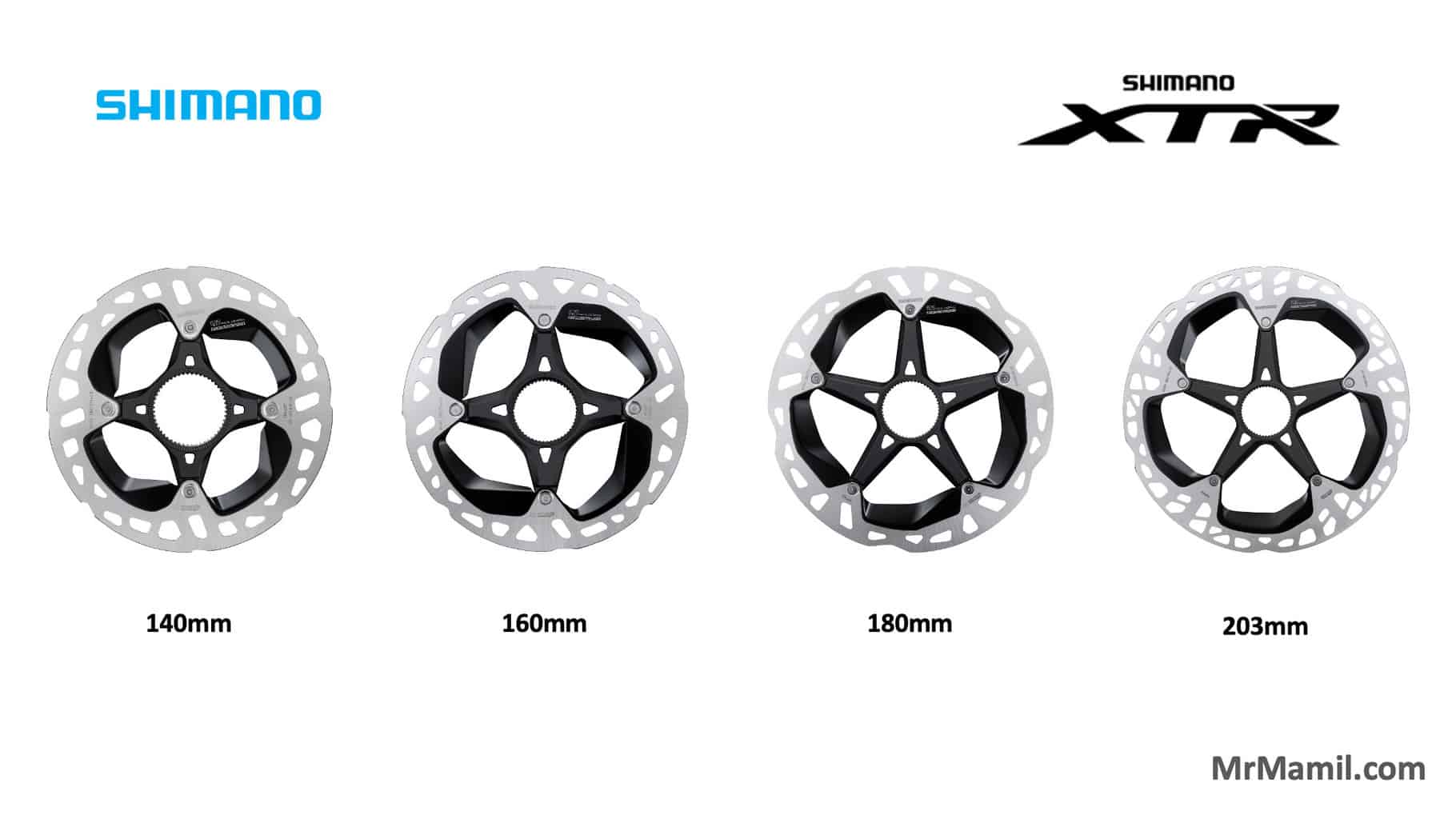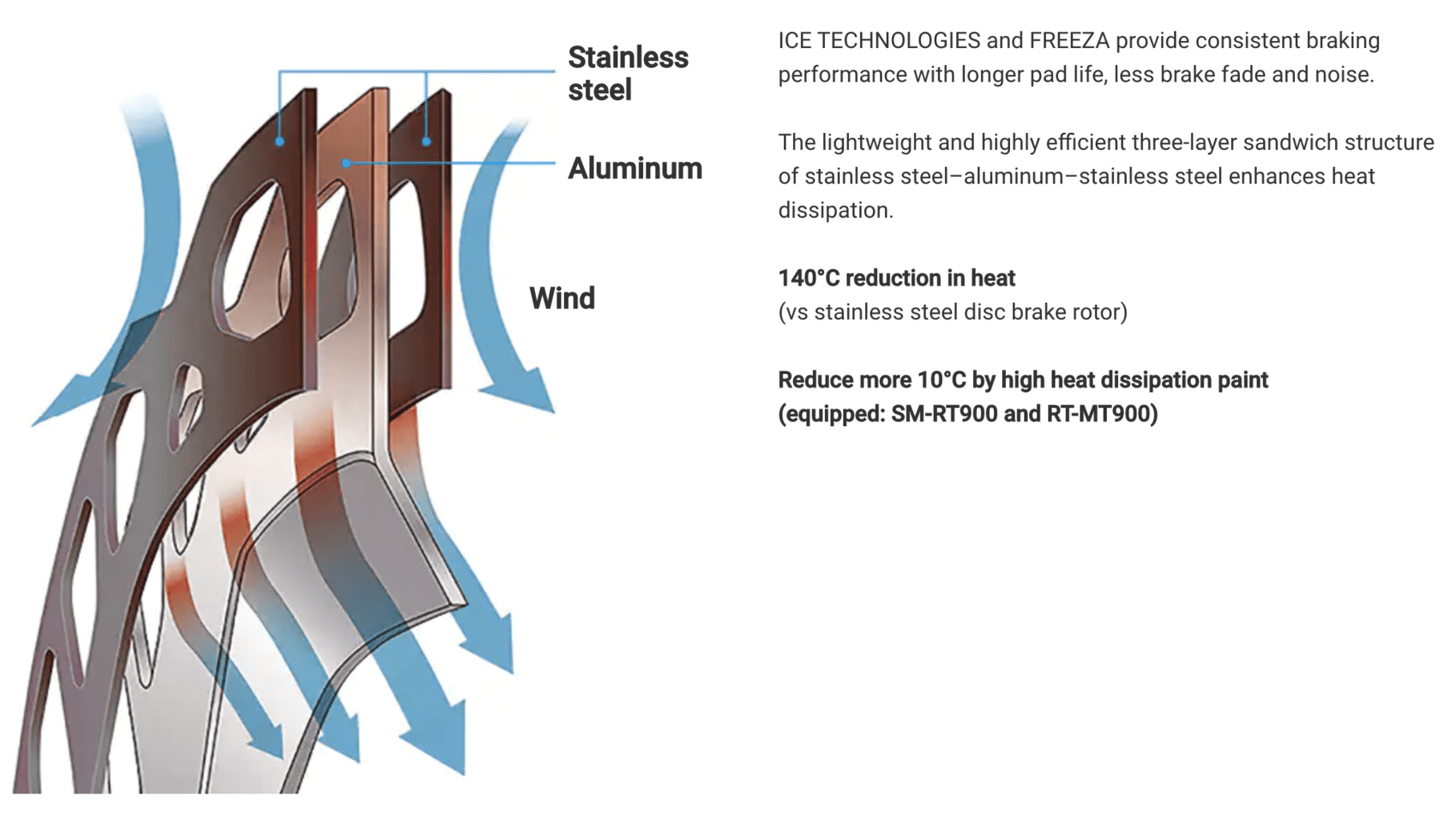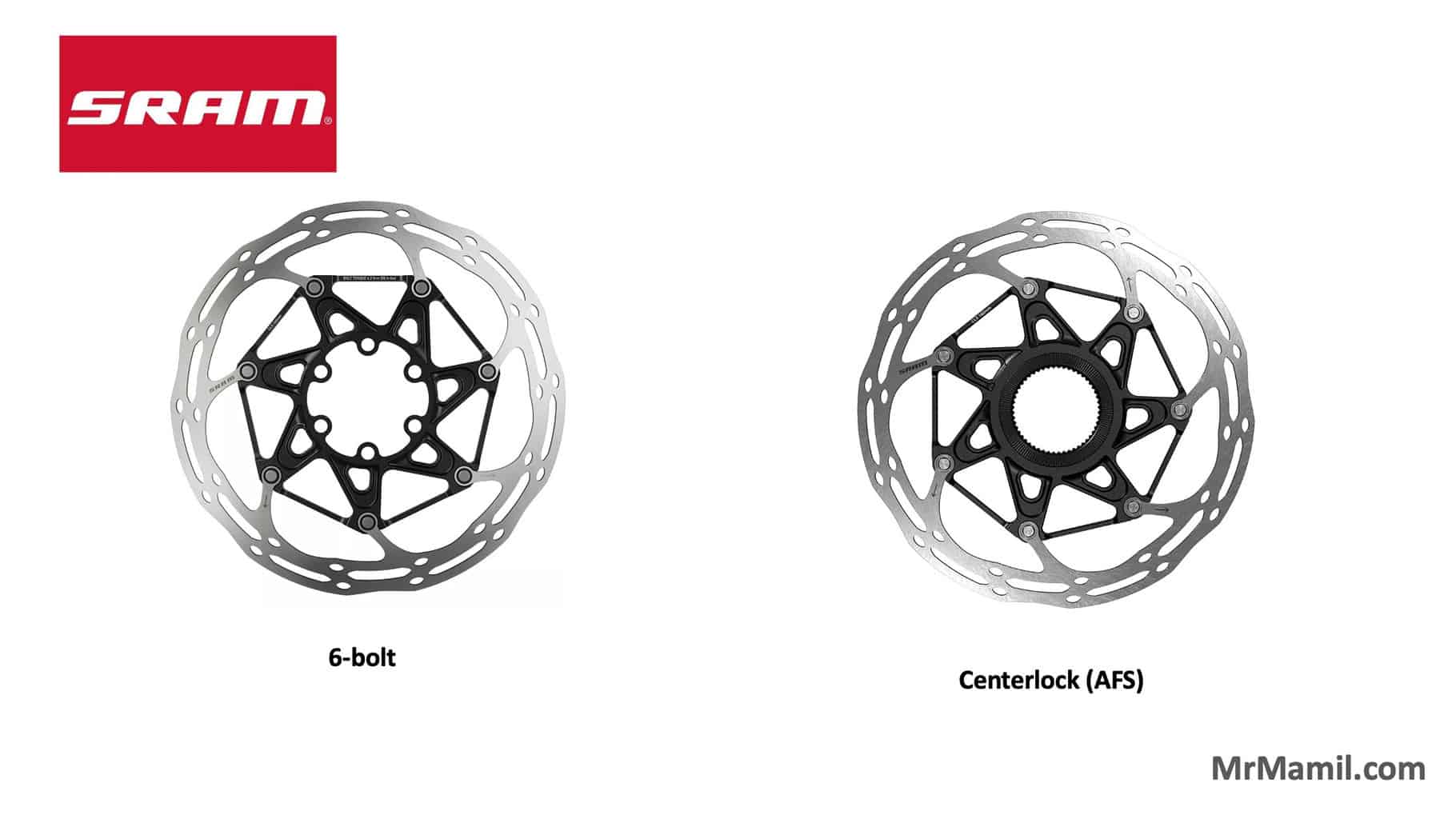Disc brakes are a newer bicycle technology on the market and are quickly becoming a norm in most bicycles today. As such, there may be some confusion about how they work and what benefits they offer over traditional rim brakes.
This guide provides an overview of the benefits of disc brakes and answers some common questions about their use.
Mechanical vs hydraulic disc brakes
Disc brakes come in two setups;
- Mechanical disc brakes work similarly to rim brakes. They’re activated by pulling a lever that engages a cable, which mechanically engages the calipers and tightens the pad onto the rotor, slowing the wheel and your bike.
- Hydraulic disc brakes use the same principle as the brakes on your car. The hoses from the brake levers to the calipers are filled with brake fluid, usually mineral oil. When the brakes are engaged, they push a piston, called the mast cylinder, which creates pressure in the brake line, causing the brakes to engage.
The hydraulic disc brake is the better of the two.
Hydraulic brakes require less pressure on the lever to fully engage the brakes. They also offer better modulation than mechanical brakes. This means you can better regulate the brakes’ stopping power, avoiding jerky stops.
Hydraulic brakes are also a closed system, preventing contaminants from affecting your brakes. This makes hydraulic brakes more reliable than mechanical ones, which have exposed lines that will eventually stretch over time or which can get caught on obstacles.
What’s the downside of hydraulic disc brakes, then?
One compromise hydraulic brakes do have has to do with heat. During long descents, the friction created by the brake calipers engaging the rotors for an extended period can heat the brake fluid, decreasing brake power.
Disc rotor sizes

There are several rotor sizes, from 140mm to 160mm, 180mm, and 203mm.
The rotor size corresponds to its diameter. Smaller sizes are typically used in road bikes and larger ones in mountain bikes.
Importance of rotor sizes
A larger disc rotor will allow you to slow down faster. Larger disc rotors are commonly used in off-road bikes that require more stopping power.
Road bikes generally have 140mm rotors on the rear and 160mm on the front. Some gravel bikes have 160mm rotors for both front and rear. Mountain bikes use at least 180mm or 203mm rotor sizes.
Why are the front rotors larger?
When the brakes are engaged, the weight of the bike shifts to the front, requiring greater stopping power on the front wheel.
Almost all mountain bikes have a minimum of 180mm rotors on the front and rear wheels. This allows for better braking control on unpredictable off-road terrain.
Rotor size vs heat dissipation

Larger rotors are also less likely to overheat. When a rotor overheats, it can cause a decrease in braking power and may also damage the brake pads.
Smaller rotors are more likely to overheat as they have less surface area to dissipate heat. Brake manufacturers overcome this by using both stainless steel and aluminum in their designs.
Shimano uses their ICE Freeza Technologies, which adds cooling fins to the rotors to dissipate heat faster.
Centerlock (AFS) vs 6-bolt disc rotors

Rotors are held to the wheels using two different methods;
- Centerlock or AFS (Axial Fixing System) is the standard method today. Centerlock is easier to install than 6-bolts because they only have one mounting point in the middle.
- 6-bolts is more complicated as each bolt needs to be torqued evenly to make sure the rotor isn’t bent or mounted off-center.
Centerlock rotors are commonly found today but are heavier and more expensive than 6-bolt rotors.
Quick release (QR) vs thru-axle
Wondering what the difference between quick release (QR) and thru-axles is?
Both are metal rods that keep your wheels attached to the fork and rear dropouts, which makes them an important component of your bike.
What is a Quick release (QR)?
QR, which replaces a bolt with a lever that can be hand-operated, was the norm until the advent of downhill mountain biking. When high-flying downhill bikers started breaking skewers and dropping wheels, the need for a new axle design was needed.
Like most technological advancements in cycling, quick-release axles were born out of demand. Italian bike racer Tullio Campagnolo (yes, the same Campagnolo who would later founded the legendary components manufacturer) grew frustrated at the length of time it took him to change gears during a race.
Back in the days of no derailleurs, bikes were fitted with a sprocket on each side of the rear wheel, which allowed for two gear options. One had to stop, remove the wheel, flip it, and remount it to shift gears. During one cold race he led, Campagnolo’s hands became so numb that he struggled to loosen the wingnuts that secured his bike’s wheel to the frame, costing him valuable time. This experience inspired him to invent the quick-release (QR) system.
What is thru-axle design?
Thru-axle dropouts ditch the U-shape for holes in the fork and rear dropouts, eliminating the possibility of dropping a wheel. The axles are also thicker, meaning they can handle the rigors of downhill racing or off-road riding rigors.
Disc brakes add more rotational force or torsion to the wheel hubs. Thru-axles do a better job of holding up to these forces, keeping the rotors and calipers aligned. And if that’s not enough to convince you, these rotational forces might even cause a QR axle might jump out of the fork.
As a result, thru axles are not only safer but also stiffer, which improves handling and eliminates brake rub. And, with the addition of a camming mechanism, they can still be quickly removed.
Disc brakes road bikes released after 2019 all use the thru-axle design. Before 2019, there are brands such as Specialized and Cannondale that used a combination of thru-axle (front) and QR (rear) for their disc brake bikes.
Thru-axle standards
When purchasing thru-axles, you’ll be faced with decisions regarding the axle’s diameter. Earlier iterations of the thru-axle were 10mm. For comparison’s sake, the standard QR axle is 5mm. From the thickness perspective, thru-axles are stronger.
The latest thru-axles are even thicker, ranging from 12mm to 15mm, depending on the usage.
- Road and gravel bikes use 12mm for both front and rear thru-axles.
- Mountain bikes use 15mm (front) and 12mm (rear) thru-axles.
Flat mount vs post mount calipers
Most disc brake bike frames today are designed for flat-mount brake calipers, especially the top-of-the-line models. Some exceptions exist in entry-level disc brake bikes where post-mount calipers are still used.
Before disc brakes in road bikes, post-mount calipers were the go-to in all other bikes, especially mountain bikes. They’re easy to install and adjust, and in most frames, the rear caliper bridges between the chain and seat stays. This helps to spread the braking load over a larger area, allowing bike manufacturers to design a lighter frame.
Shimano designed the flat mount in 2015
Then in 2015, Shimano came out with the flat-mount design with the Shimano RS505 and RS805 brake calipers. Flat mounts are smaller and attach flush to the front fork and the rear chainstay, hence the name flat.
The bolts for flat-mount calipers thread through the frame/fork first and then into the calipers, unlike the post-mount calipers, where the bolt goes through the calipers and then into the frame/fork.
Flat mount calipers are much cleaner looking, aerodynamic and lighter. Because of these characteristics, flat mount design is used on most road and gravel bikes from around 2019 onwards.
Can I convert install a post-mount caliper to a flat-mount bike frame, and vice versa?
Using an adapter, you can install a post-mount brake caliper on a flat-mount frame/fork. However, it’s impossible to do it the other way; flat-mount brake caliper on post-mount frame/fork).
If you have an older post-mount frame/fork and still want to run the latest disc brake calipers, consider the SRAM Red AXS.
Here’s a little secret. You probably won’t find a post-mounted SRAM Red AXS brake caliper on their website, but they do exist. Ask your local bike shop for part numbers 00.7018.392.000 and 00.7018.392.001.
You’re out of luck with Shimano, as all their brake calipers are flat mounts.
Ease of maintenance
As with most things that involve technological advancements in bikes, disc brakes require more maintenance than their rim brake counterparts.
Rotors and pads replacement
For disc wheelsets, you’ll only replace the rotors when they’re either warped or worn. This helps to bring down the cost of replacing the entire wheelset, as in rim brakes.
Having said that, there are also costs associated with both rim and disc brake pads. Generally, the disc brake pads will last at least 3,000 miles before needing replacement. This also depends on other factors such as overall weight, types of terrain, weather, and how often you brake.
Brake rub and squeal
A brake squeal is usually caused by a foreign substance, usually chain lube, finding its way onto either the rim or rotors. This problem is remedied by cleaning the rotor and pads.
A brake rub requires adjusting the calipers to eliminate this issue. However, adjusting disc calipers is more cumbersome than adjusting rim brake calipers. You can still do it yourself at home after some practice.
Bleeding the brakes
Both disc brake and rim brake cables will eventually need a little care and maintenance. Rim and mechanical disc brake cables may eventually need replacement. This may be the result of damage or normal wear and tear.
The brake hoses on hydraulic disc brakes, similar to the brake lines on an automobile, will need to have their brake fluid replaced/refilled if the brakes start to feel spongy. This is done by bleeding the brakes, in which the fluid is emptied and replaced with fresh fluid.
Bleeding the brakes; however, should only be required when the closed brake system has been compromised somehow. This may result from a leak that has allowed air into the system or caused brake fluid to be released.

Alex Lee is the founder and editor-at-large of Mr. Mamil. Coming from a professional engineering background, he breaks down technical cycling nuances into an easy-to-understand and digestible format here.
He has been riding road bikes actively for the past 12 years and started racing competitively in the senior category during the summer recently.